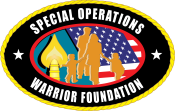In the dark waters of the Persian Gulf, under the cover of night and strict radio silence, a new chapter in U.S. Special Operations history was quietly being written. Few knew it then, but Operation Prime Chance would mark the unofficial debut for the United States Special Operations Command (USSOCOM) just months after its establishment on April 16, 1987.
Amid the chaos of the Iran- Iraq War, oil tankers sailing through the Gulf became frequent targets of mines and missile attacks. To ensure the safe passage of U.S.-flagged vessels, the Pentagon launched Operation Earnest Will, reflagging Kuwaiti tankers. But beneath the surface, a far more clandestine operation unfolded — one that would forever shape the role and reputation of the U.S. Special Operations Forces.
This secretive mission brought together elite warriors from the Army’s 160th Special Operations Aviation Regiment (Night Stalkers), Navy SEALs, and Special Boat Teams.
Staging from mobile sea bases — converted oil barges like Hercules and Wimbrown VII — the teams operated with surgical precision. Despite early doubts by the Joint Chiefs of Staff, the concept was ultimately cleared to proceed. Their orders: search for Iranian naval ships laying mines, protect shipping lanes, and eliminate threats before they could strike. Using modified Army AH-6 Little Bird helicopters equipped with night vision goggles and infrared targeting systems, these “Sea Bats” hunted Iranian gunboats. One such ship was the Iran Ajr, initially spotted by a SOAR MH-6 and subsequently scuttled after the SEALs searched the ship and took Iranian prisoners.
It was during this operation that the military not only demonstrated the value of joint Special Operations capabilities but also tested the very concept of USSOCOM itself.
Prime Chance wasn’t just a military milestone — it was proof of concept. It demonstrated that when highly trained operators, cutting-edge technology, and seamless inter-service collaboration converged, the U.S. could outmaneuver any threat, even in one of the world’s most volatile and challenging maritime zones.
The success of Prime Chance was quietly celebrated, but its legacy would be loud. The operation laid the groundwork for future missions that would rely on the skill and precision of U.S. Special Operations Forces, from Panama to Iraq, Afghanistan, and beyond.
For Special Operations Warrior Foundation, Operation Prime Chance serves as a powerful reminder of the risks these Warriors have always taken — often in silence and shadows. Our mission is to ensure that their children are never forgotten and that their legacies are honored through education and unwavering support.
Photos courtesy of MG (Ret) Clay M. Hutmacher
Sources:
- Defense Media Network
- “Operations Prime Chance and Praying Mantis”
- https://www.defensenetwork.com
- U.S. Special Operations Command History Office
- “History of the United States Special Operations Command: 1987-2007”
- https://www.socom.mil
- American Special Ops
- “Operation Prime Chance”
- https://www.americanspecialops.com/night-stalkers/operations/prime-chance/


